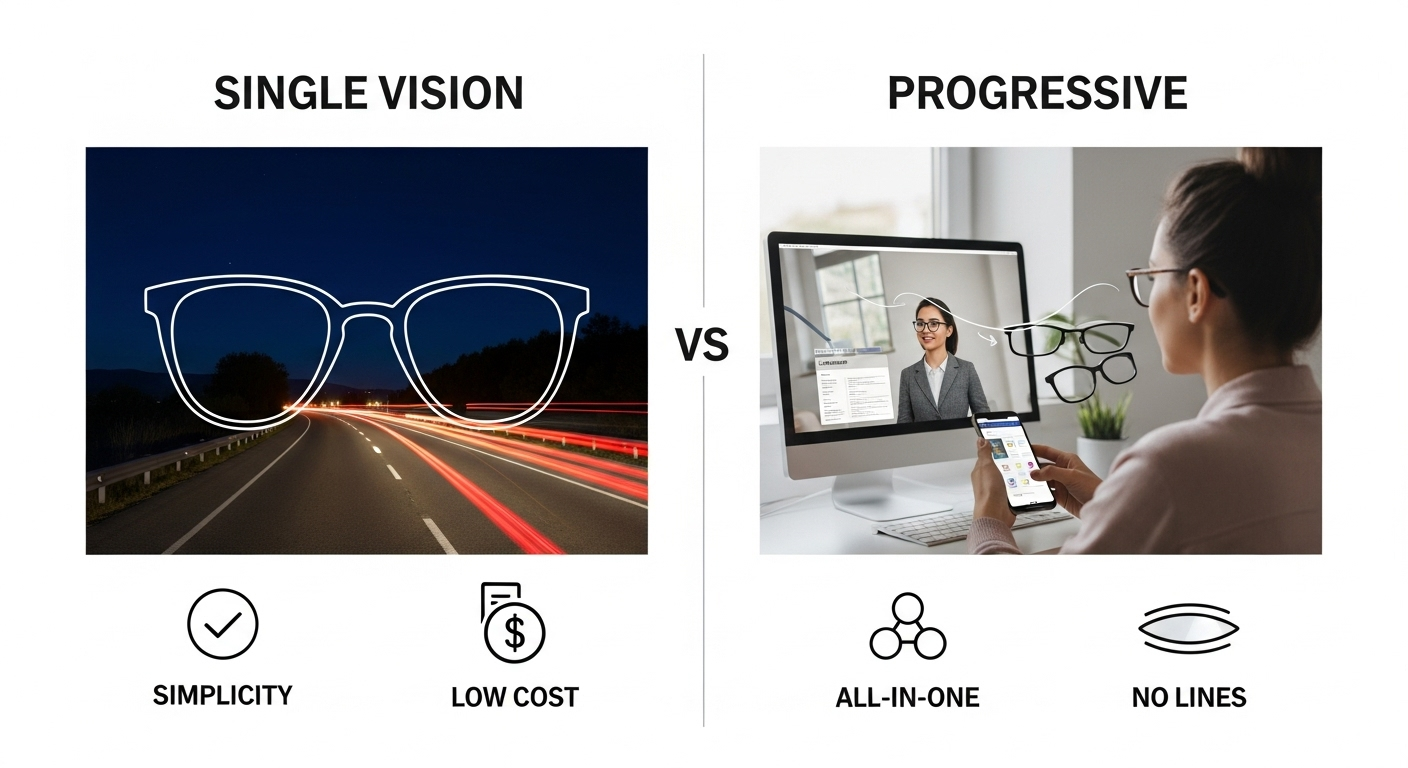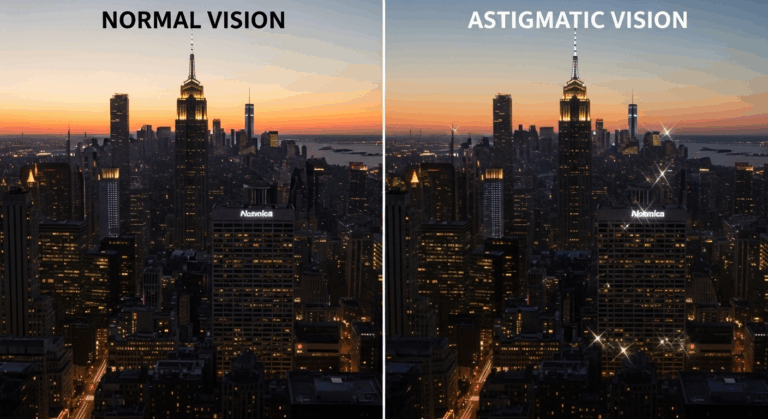If you’re squinting at your phone, reaching for reading glasses, or wondering why your distance vision feels off, you’re not alone. We get asked all the time: Should I stick with single vision eyeglasses, or move to progressive lenses? This decision affects not only how clearly you see but how comfortable you are during everyday tasks — driving, office work, cooking, or scrolling at night.
Think of lenses like a pair of shoes: one pair might fit many situations fine, but a more tailored pair can make long days feel effortless. In this article I’ll walk you through the differences between single vision and progressive vision eyeglasses, who benefits from each, practical tips for fitting and adaptation, cost considerations, and how to choose the right option based on your lifestyle and eye health.
What are single vision eyeglasses?
Definition and common uses
Single vision eyeglasses have one optical power across the entire lens. They correct one type of vision problem at a time — distance, near (reading), or intermediate (computer). If your vision prescription only lists sphere and cylinder values for one focal length, you probably wear single vision lenses.
When single vision is the best choice
- You’re young and only need distance correction (myopia or astigmatism).
- You need dedicated reading glasses only for close work and don’t want multifocal optics.
- You prefer the clearest, undistorted view for one task (e.g., driving at night).
What are progressive lenses?
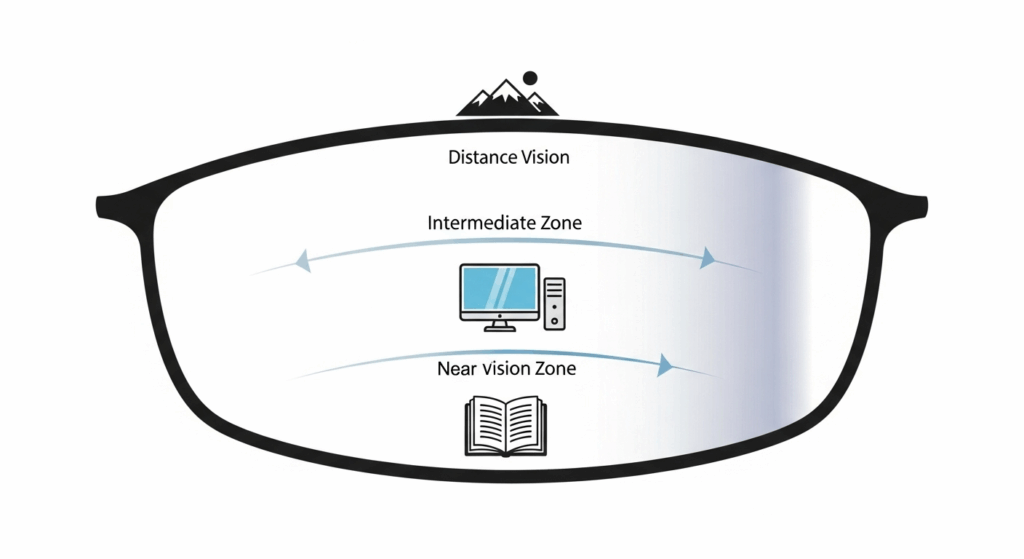
Definition: seamless multifocal lenses
Progressive lenses (also called progressive addition lenses or PALs) provide a smooth transition between distance, intermediate, and near powers without visible lines (unlike bifocals or trifocals). Imagine a graduated slope in power from the top of the lens (for distance) down to the bottom (for reading).
Who progressive lenses are designed for
Progressives are primarily for people with presbyopia — the age-related loss of near focusing ability, typically starting in the early to mid-40s. They’re also great if you want to avoid juggling multiple pairs of glasses.
Single vs Progressive: pros and cons
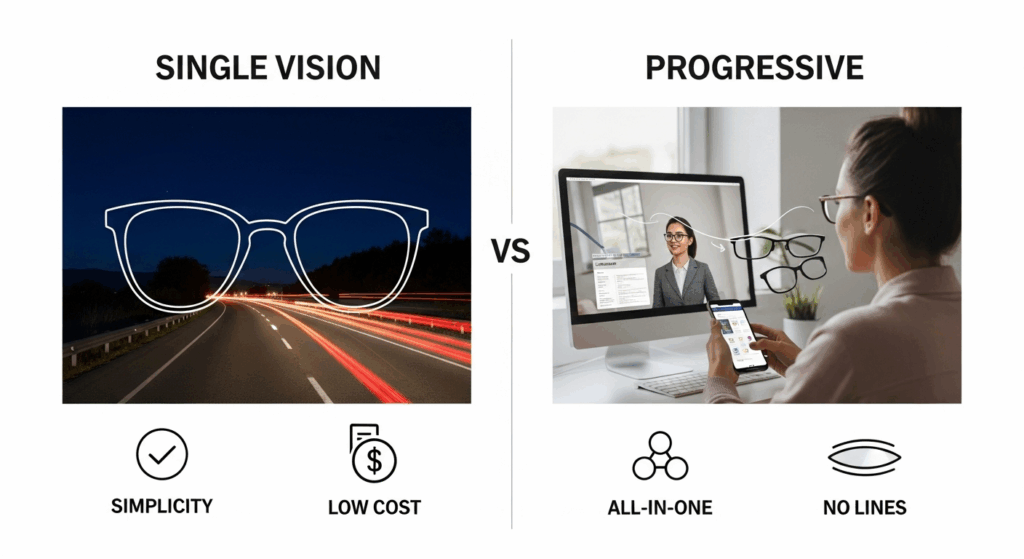
Advantages of single vision eyeglasses
- Simplicity and clarity: No zones to search through — your whole lens does the same job.
- Less distortion: Straight edges, no peripheral swim.
- Lower cost: Generally cheaper than progressive lenses.
- Easier adaptation: Most wearers adapt instantly.
Disadvantages of single vision
- Limited to one focal distance: You may need separate reading or computer glasses.
- Inconvenience: Switching between pairs when moving from one task to another.
Advantages of progressive lenses
- All-in-one solution: Distance, computer, and reading in one frame.
- Cosmetic: No visible line like traditional bifocals.
- Natural head posture: You’ll often look through the right zone for the task — better ergonomics for computer work and reading.
Disadvantages of progressive lenses
- Adaptation period: Some people experience peripheral distortion or “swim” for days to weeks.
- Frame and fit sensitive: Proper fitting with accurate pupillary distance (PD) and fitting height is crucial.
- Cost: More expensive, especially premium or customized designs.
- Not ideal for very small PDs or extreme prescriptions: Some progressive designs can be limited.
How to choose: who should pick single vs progressive?
Choose single vision if:
- You’re under 40 and don’t have presbyopia.
- You only need correction for one distance and prefer the sharpest possible view.
- You want a budget-friendly or sports-specific setup (contact lenses + single vision for sport).
Choose progressive lenses if:
- You have presbyopia and want one pair for most daily tasks.
- You dislike switching between multiple glasses.
- You value a modern look without bifocal lines and accept a short adaptation period.
Remember: we often tell patients that lifestyle matters more than age. A 45-year-old who reads a lot and works at a computer will likely benefit from progressives. A 65-year-old who mostly drives may prefer single vision distance glasses plus a separate reading pair.
Fitting and adaptation: practical tips that make a big difference
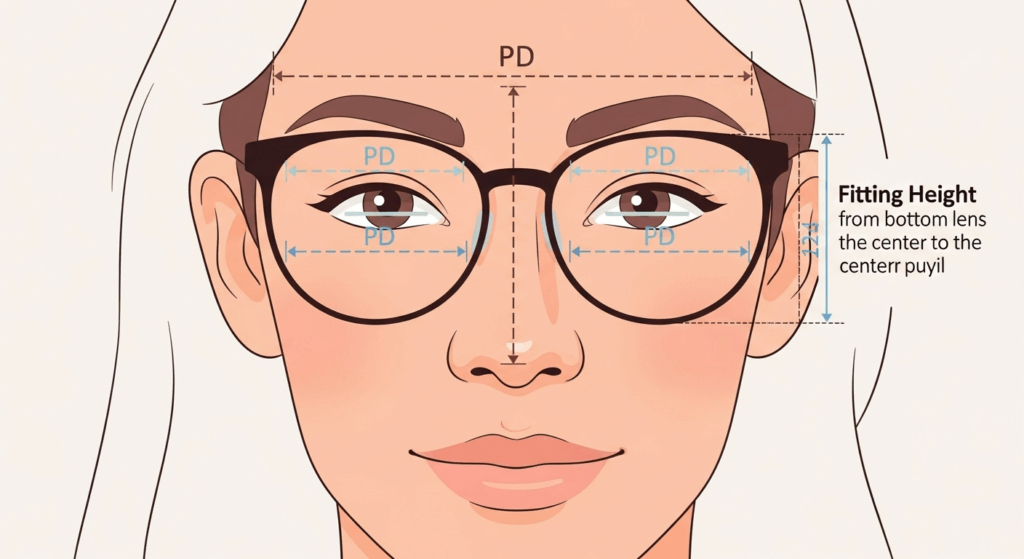
Accurate measurements are everything
Progressive lenses require precise measurements: pupillary distance (PD), monocular heights, and frame fit. Think of PD like the lens’s GPS — get it wrong and everything feels off.
Try the right frame
Tall, deep lens shapes give designers more vertical space to create smooth transitions. Narrow frames limit the reading zone and can make progressives frustrating.
Expect an adaptation period
Most people adapt within a week or two. Try these tips:
- Move your head, not just your eyes, to look through the correct zone.
- Wear your new glasses consistently during waking hours to speed adaptation.
- If dizziness or extreme blurriness persists after 2–3 weeks, return to your optician — adjustments or remakes may be needed.
Specialty progressive options
- Short-corridor progressives for smaller frames.
- Office/occupational progressives optimized for computer and near tasks (limited distance).
- Digital/free-form customized progressives designed from your prescription, frame choice, and lifestyle — often more comfortable but pricier.
Optometry & ophthalmology perspective: when to be cautious
- If you have significant ocular disease (advanced cataract, macular degeneration, prior retinal surgery), discuss progressive lenses with your ophthalmologist first; certain central vision problems can make progressive adaptation difficult.
- For large anisometropia (big prescription difference between eyes), progressives can be trickier; careful fitting and sometimes separate reading glasses are recommended.
- Remember: an up-to-date eye exam is essential. A progressive prescription requires refractive precision.
Cost, insurance, and lens material considerations
Cost range
- Single vision lenses: generally the most affordable.
- Basic progressives: mid-range.
- Premium/custom progressives (free-form digital): top-end pricing.
Prices vary by lens material (CR-39, polycarbonate, high-index), coatings (anti-reflective, scratch-resistant, blue-light filter), and brand. We often advise balancing lens quality with what you actually need: if you’ll wear the glasses 12+ hours/day, spend more on progressives and AR coating.
Insurance and coverage
Many vision plans cover a portion of the frame or lenses but vary on progressive coverage. Check your plan — some cover basic lenses only, and progressives may require a higher copay.
Care and maintenance
- Clean lenses with microfiber and lens cleaner (not shirt cuffs).
- Keep them in a hard case.
- Adjustments: visit your optician for small frame tweaks — they’re free at many shops.
- Replace progressive lenses every 2–3 years or as prescription changes; single vision glasses follow the same rule.
Quick decision checklist — single vs progressive
- Need one lens for everything? → Progressive.
- Want simplest, cheapest clarity for a single task? → Single vision.
- Spend lots of time on computer + reading? → Consider occupational progressives or a progressive pair + single-vision distance backup.
- Have eye disease or big prescription differences? → Consult your eye doctor before switching.
Conclusion — what’s the bottom line?
Single vision eyeglasses give crystal-clear vision for one task and are simple, comfortable, and budget-friendly. Progressive lenses trade a short adaptation period for the convenience of near, intermediate, and distance vision in one stylish pair. There’s no one-size-fits-all answer — your age, lifestyle, eye health, and tolerance for adaptation determine the best pick. If you’re not sure, book an eye exam and a consultation with your optician: try both options if possible, and remember that small fitting tweaks often turn frustrating progressives into a “where-have-you-been-all-my-life” experience.
